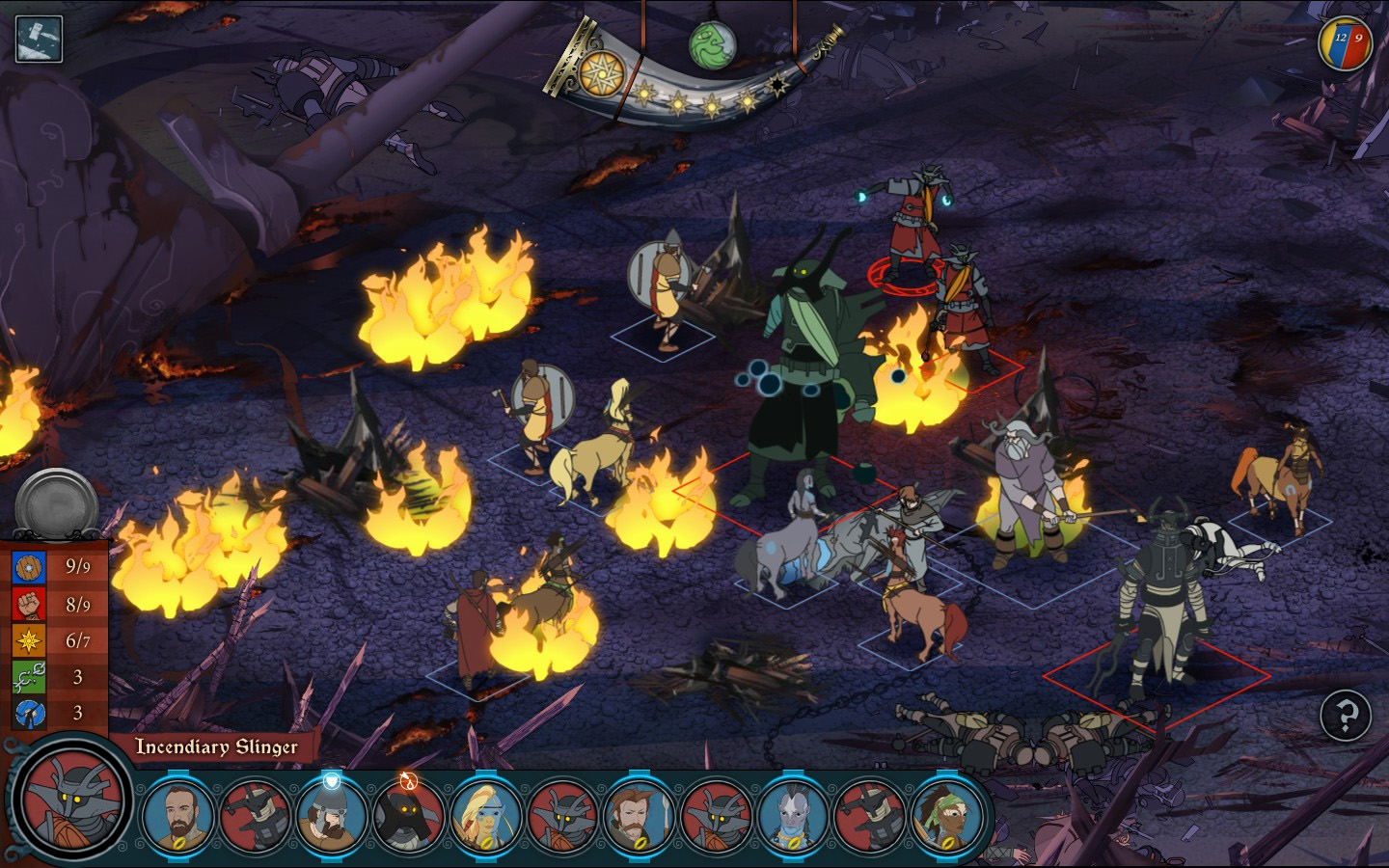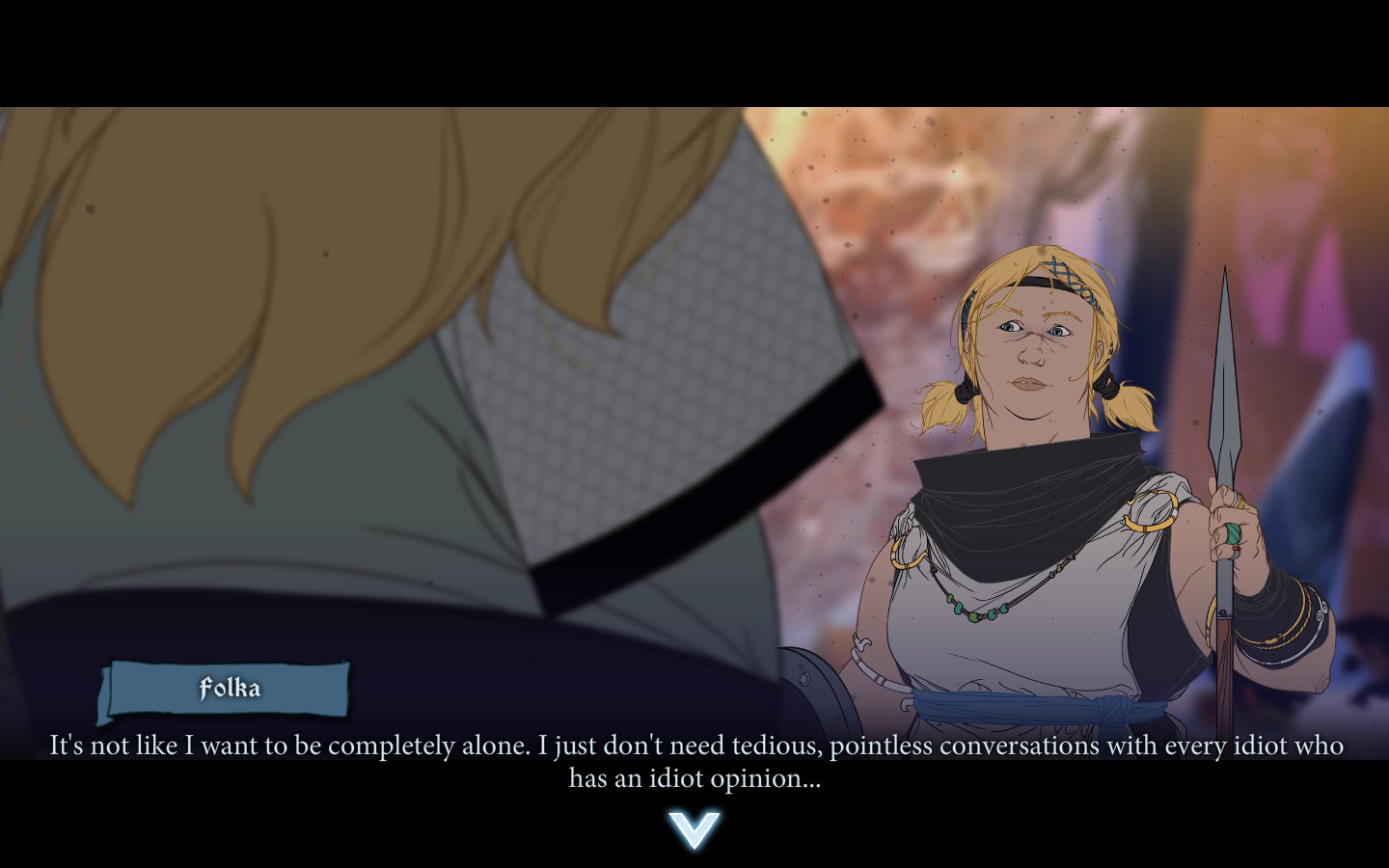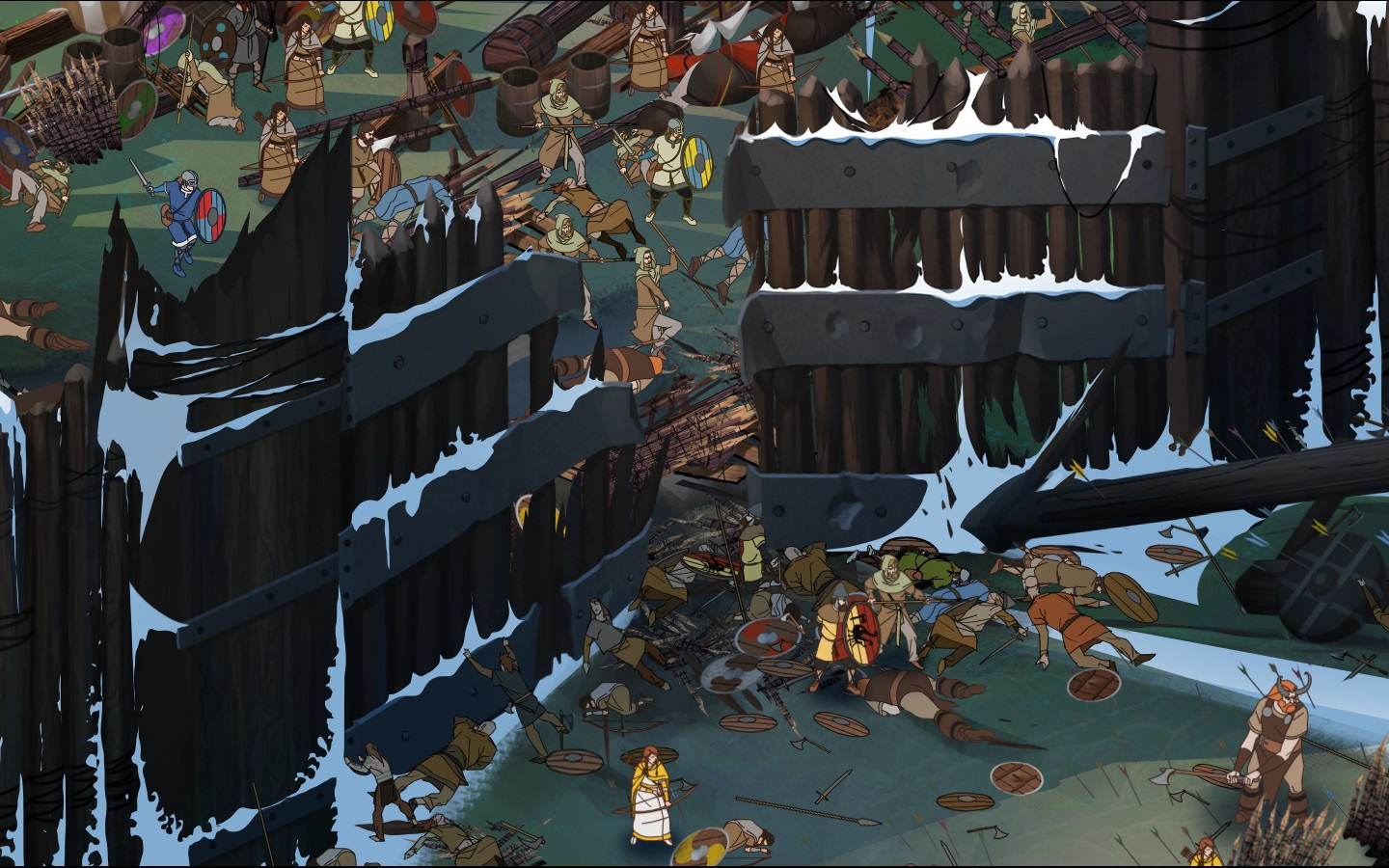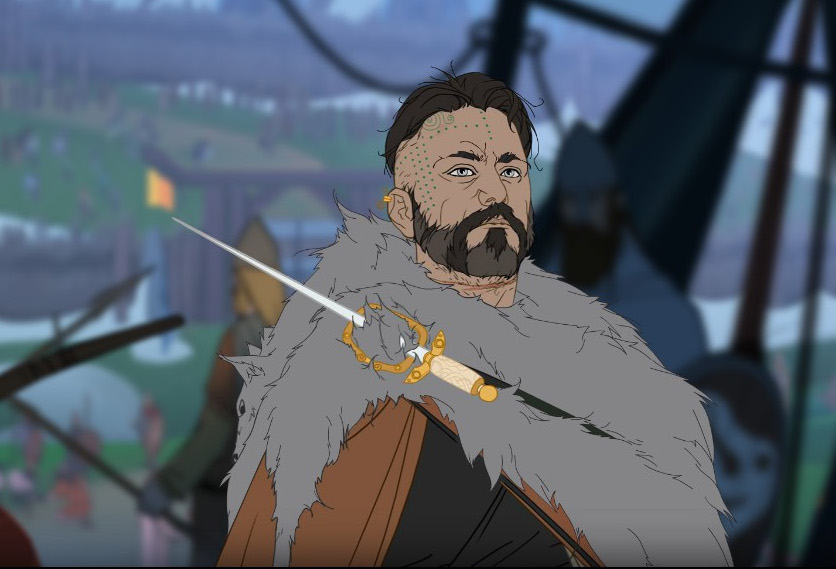Our Verdict
A daring, exciting and bleakly powerful payoff that handsomely rewards your investment in its characters.
PC Gamer's got your back
What is it? The third and final chapter of Stoic’s narrative-led RPG trilogy
Expect to pay £18.74/$25 (Steam)
Developer Stoic
Publisher Versus Evil
Reviewed on Intel Core i5-4440 CPU, 8GB RAM, GeForce GTX 645
Multiplayer? No
Link Official site
Buy it Steam / GOG
Having established a reputation for mercilessness, Stoic’s Norse RPG epic was never likely to allow its exhausted heroes some respite. If anything, The Banner Saga 3 is even more crushingly grim than the previous two episodes—though that’s only fitting, since this is, in every sense, the end of the line. As a small group ventures into the wastelands beyond Arberrang’s fragmenting walls, looking for the serpent that’s about to destroy the world, you’re not just left wondering if they’re going to make it. The more pressing question is whether, if they do succeed, there’ll be anything for them to come back to.
“Despite everything that’s going on, it’s still mankind that worries me the most,” says Rook astutely, moments before things go from bad to disastrous. Arberrang was already in a bit of a state upon the caravan’s arrival; now, with its king at death’s door and irredeemable bastard Rugga having successfully sown divisions among the populace, the city is a powder keg, waiting for the tiniest spark to make it explode. And now here come the dredge—your former enemy suddenly vulnerable and sympathetic—begging to be let in, before they can be consumed by the poisonous fog that has choked the rest of the world. It’s a deeply distressing scenario, even before Rugga starts spouting off about “the will of the people”, and making populist speeches riddled with the kind of lies that frightened citizens are only too willing to believe.
And if one pressure-cooker environment wasn’t enough, the potential world-savers of the piece have been forced into the uneasiest of alliances. Trapped within a bubble of light magic are one-armed Varl giant Iver, spellweavers Eyvind and Juno, and the Ravens, episode two’s mercenaries who aren’t just minus a leader but have effectively been tricked by a mind spell into helping out. Of course, when the episode begins, they don’t know that yet. But the penny has to drop soon…

The two-pronged approach to storytelling works as well here as it has in previous entries, the plot always seeming to switch back just as you’re getting anxious to find out what’s happening to the other group. However, there’s one key point of difference that may well prove divisive. Arberrang is a sprawling place, big enough that it requires your caravan to trudge from one side to the other as you deal with the various internecine conflicts inside the walls and to help keep outside threats from breaking in. But where previous episodes had you regularly encountering new places and people, your knowledge of the world growing with every city and village you passed through, there isn’t the same sense of journey this time. Not only is half the action is contained within a single place, but the other half of the story has you exploring a world that lies in ruins.
As it turns out, you’re not the only ones out there, but you shouldn’t expect the cast to grow much beyond the small handful of newcomers introduced at the outset. And you don’t get to gawp at the pretty scenery so much as shudder at the fate of anyone unfortunate enough to be caught in the darkness. The visuals are still arresting, but more abstract: at times you’ll swear the abundance of jagged edges is going to puncture your shimmering bubble, which appears ever more fragile with every step. Whichever group you’re currently following, the atmosphere is consistently, oppressively unsettling, the tension so thick you can practically taste it. That’s partly thanks to some typically masterful use of sound: Arberrang is a relentless cacophony of bassy rumbles, cracks and shouts, while echoing howls, eerie whistles and distant screeches are your soundtrack in the world outside. Around all this, Austin Wintory’s score swirls and eddies ominously, with odd atonal stabs that add a disturbing note of hysteria to an already chaotic mix.
All of which means this final episode strikes a slightly different tone to the previous two. And yet, somehow, it works. True, there’s nothing that quite matches the exhilaration of the second game’s floating rocks set piece—though a sequence where the caravan is forced to cross a lake of ice provides one of the series’ most spectacular moments to date—but the focus on character is ultimately the right decision. Stoic invests just enough in its few new faces that you’ll care about them, but this is all about ensuring a satisfying payoff for those you’ve grown attached to over the course of two or three episodes.

Not everyone gets equal time in the spotlight, but that’s inevitable with a cast of this size. Besides, this wouldn’t be The Banner Saga without a few abrupt—and sometimes shocking—farewells. You’ll face more life-and-death decisions than in both previous entries, and if some of them feel particularly cruel, it all adds to the increasing desperation. Amid such confusion and disorder, you can’t be expected to make the right decisions all the time; here, more than ever, it’s usually a choice between bad and worse. As a general rule: trust should only go so far, and though it’s tempting to do the ‘right’ thing, when the world is turning in on itself, that might not necessarily be the wisest course of action.
There’s no let-up in the game’s strategic combat either, with enemy reinforcements arriving as soon as you’ve finished a fight. The new wave-based format doesn’t apply to every encounter, but more often than not you’ll be given the choice between fleeing or battling on. Choose to continue, and you’ll be given the opportunity to reposition your current units—arrows indicate from which direction new opponents will arrive—or bring on replacements for anyone who’s taken plenty of punishment and will be thus unlikely to last another round.
With no opportunity to train units this time—given the circumstances, the option simply wouldn’t make sense—it’s often worth persevering unless your very best units are in danger. Besides, your rewards for carrying on are twofold: not only do you get a chance to give your less capable fighters some much needed battle experience, potentially earning them a promotion, but you’ll be rewarded with a useful item by defeating the boss of the final wave. You’ll collect others on the way, though, so you’re not overly punished should you choose to take the coward’s way out.

When equipped, these trinkets often give significant boosts to character talents, which is one way to lean into an individual unit’s specialities. The other is to spend renown on giving them a heroic title, though you’ll need to choose carefully, since they’re unique to that character and can’t be removed. But these can be game-changers. If you’ve got a decent ranged unit, you can dub them The Forsaken, boosting their attack power as long as they’re away from their allies. By contrast, The Hopeful is handy for support units, increasing the armour and strength stats of anyone in the squares immediately adjacent to them—though you may prefer one of the options that lowers their aggro instead. And you don’t need to think too hard to realise how to benefit from having a Death’s Messenger on your team: promote them to the highest rank and they’ll deliver five points of extra damage on consecutive attacks against the same enemy. And with items potentially pushing specific abilities beyond their natural limits, you can end up with a better-than-average chance of resisting damage, or earning a critical hit bonus.
This somewhat evens the odds against a very different kind of threat. The toxic shroud beyond Arberrang’s walls has warped every man, woman and beast, which means you’ll face standard warriors, dredge and even bears given otherworldly powers. One type of dredge can now stretch out a mass of writhing tentacles, draining the strength and willpower of a single unit to empower their own kind.
The result is a thrilling and affecting finale that closes the book on a bleak but riveting journey in fine style
A standard axeman, meanwhile, still possesses his bloody flail attack, but now his unearthly endurance means his willpower stat will absorb the weight of strength attacks for the first couple of turns. Even before they explode, leaving behind puddles of will-sapping goop, willpower is at a premium—and only the Arberrang lot has the horn that allows you to replenish it. The others can call upon a bolt of lightning that spreads diagonally to other units, though that potentially includes your own. As such, the strategies you use for one group should differ quite significantly from the other, making for a more entertainingly varied tactical experience.
There’s a big shift in the story, too, though to reveal its exact nature feels a little too much of a spoiler. Suffice to say, for two games we’ve all grown used to the days ticking upwards, but beyond a certain point, the number becomes a countdown. Suddenly, you’re more aware of the passing of time than ever, the slow trudge of your heroes making you wish they’d get a move on, despite the many hardships they’re facing.
Though it refuses to pull its punches throughout—landing a few right at the death—this is a shorter conclusion than you might expect, lacking some of the range of its sprawling predecessor. And it’s true that there’s perhaps not quite enough visible evidence of Arberrang’s deterioration, even with the sound and music team doing their best to amplify the turmoil. But with the world falling apart, it makes perfect sense to zoom in on its people—and their wildly different responses to their extraordinary predicament make for enthralling, wrenching drama. The result is a thrilling and affecting finale that closes the book on a bleak but riveting journey in fine style. It is, in short, the ending the saga deserves.
A daring, exciting and bleakly powerful payoff that handsomely rewards your investment in its characters.


